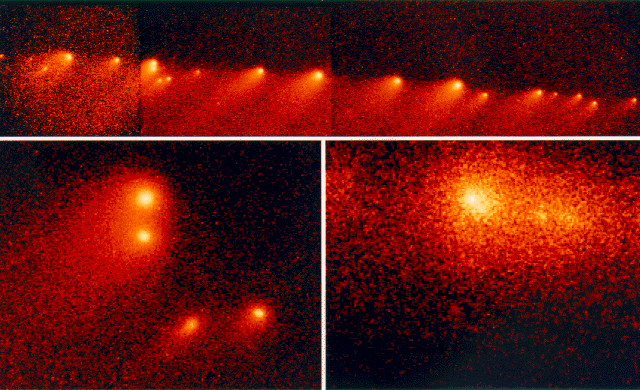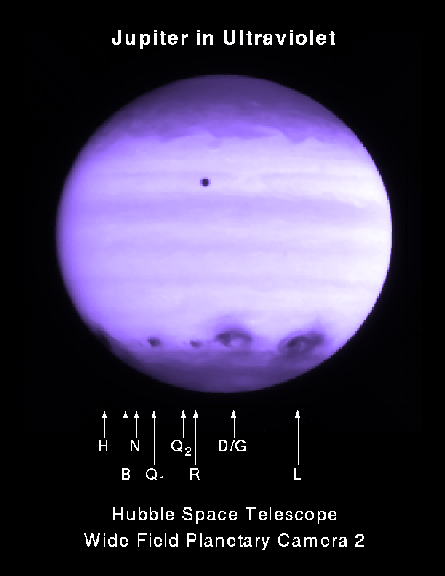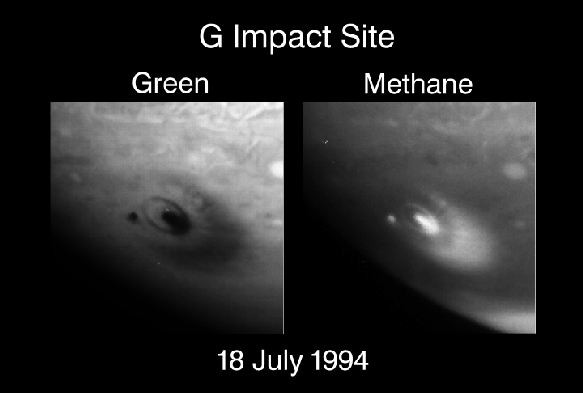
Comet Shoemaker-Levy 9 was the ninth short-periodic comet discovered by Eugene and Carolyn Shoemaker and David Levy. It was first detected on a photograph taken on the night of March 24, 1993, with the 0.4-meter Schmidt telescope on Palomar Mountain in California. The magnitude of the comet's brightness was reported as 14, more than a thousand times too faint to be seen with the naked eye.
Through the observations, the comet's orbit was demonstrated to be around Jupiter and that it had made a very close approach to Jupiter on July 7, 1992. During this close approach, the unequal Jupiter gravitational attractions on the comet's near and far sides broke the fragile object apart.

Since it was not at all obvious where the center of mass of this new comet lay, most observers were using the position of what appeared to be the center of the train. This made an accurate orbit (or orbits) difficult to determine. It was eventually determined that the comet train would again pass within 25,000 kilometers of the center of Jupiter, on July 19, 1994. This distance was less than the radius of Jupiter. In other words, the comet, or at least parts of it, would hit Jupiter.
By December 9 1993, the probability of impact for all the large fragments of Shoemaker-Levy 9 was calculated to be greater than 99.99%. The fragments would hit over a period of several days, centered on July 19, on the night side of Jupiter. Unfortunately, this was the back side of Jupiter as viewed from Earth. The impact site would be close to the limb of Jupiter, near 750 from the midnight meridian and only a few degrees beyond the dark limb as seen from Earth. The disruption of a comet into multiple fragments is an unusual event, the capture of a comet into an orbit about Jupiter is even more unusual, and the collision of a large comet with a planet is an extraordinary, millennial event. The observatories of the world lined-up for a week of observations.
Fragments of comet P/Shoemaker-Levy 9 collided with Jupiter on July 16-22, 1994. The results were spectacular. At least 20 large fragments impacted the planet at 60 kilometers per second, causing plumes thousands of kilometers high. They left hot bubbles of gas in the atmosphere and great dark scars which lasted for months after the collision. The largest fragments were estimated at 2 kilometers in diameter.
The fragments impacted Jupiter at approximately 45 degrees south latitude and 6.5 degrees longitude from the limb, and 15 from the dawn terminator just out of view of the Earth. Eleven minutes after impact, the point in the atmosphere where the impact occurred would rotate across the limb and 14 minutes later would cross the dawn terminator. The fragments were moving at an angle of 83 degrees from the Jovian north to south axis and struck the cloud tops at about 45 degrees.
Impact from Viewpoint of Q3 Fragment


Excerpt from the Encyclopedia Britannica without permission.